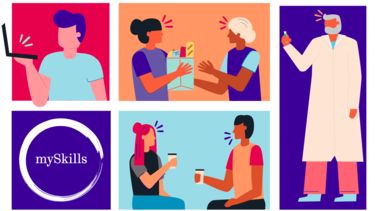How to avoid plagiarism
What is plagiarism?
Plagiarism occurs when you present someone else's work or ideas without making it clear that it is not your own work. It is sometimes referred to as false authorship.
It can be done intentionally - e.g. copying directly from others or the internet and buying essays. Plagiarism can also be unintentional - e.g. incorrect referencing, forgetting to include citations or a reference list/bibliography of the sources you have used, and inappropriate use of generative AI.
You can also self-plagiarise, if you submit your own previously assessed work as part of a new assignment without proper acknowledgement.
Start the online tutorial - Understanding plagiarism
View the tutorial as a DOCX (156 KB)
Start the online tutorial - Plagiarism and Referencing Quiz
Book a place - Referencing and preventing plagiarism workshop/webinar
How to avoid plagiarism
These are the two main ways to avoid plagiarism:
- Adopt correct and precise reference management and record keeping practices while reading information sources and making notes.
- Apply consistent and accurate referencing while writing up assignments.
Think of referencing as an ongoing part of your work, not as an afterthought.
Reference management when making notes
Adopting good reference management means keeping details of the information sources as you read them and make notes about them.
When making notes, clearly distinguish between others’ quotes, others’ ideas you may want to paraphrase, and your ideas and reflections. Remember to record the page number for direct quotes and paraphrases.
See Note making - Referencing: the essentials
Referencing
In academic writing, referencing is a two-part process:
- Add in-text citations for quotes, paraphrases, and summaries in the body of your assignment.
Good practice of when to quote:
- Quoting is including a short section of a source using exactly the same words as those used by the original author.
- The use of quotations varies considerably between disciplines. Reading widely will help you develop this skill within your discipline.
Good practice of when to paraphrase:
- Paraphrasing is putting a specific concept of an author into your own words.
- It does not mean changing the odd word, but it is showing your own understanding of it.
Good practice of when to summarise:
- Summarising is briefly presenting the main concepts of a source or a substantial part of it.
- It is outlining the key points or the overall meaning while showing your own understanding.
See Quoting, Paraphrasing and Summarising - Referencing: the essentials
See StudySkills@Sheffield How to paraphrase and quote
- Compile a reference list or bibliography
Include a reference list or bibliography at the end of your work, listing in details the sources you have used or cited.
All types of sources; visual, audio, and social media, including information freely available online, need to be acknowledged.
See Reference lists & bibliographies - Referencing: the essentials
If you are likely to be dealing with large numbers of references, consider using reference management software like EndNote.
Book a place - Using reference management software: an introduction workshop/webinar
To see other types of academic misconduct and how you can prevent them, visit:
StudySkills@Sheffield Academic integrity and academic misconduct
Next steps
Generative AI and academic integrity
Further resources

mySkills
Use your mySkills portfolio to discover your skillset, reflect on your development, and record your progress.
